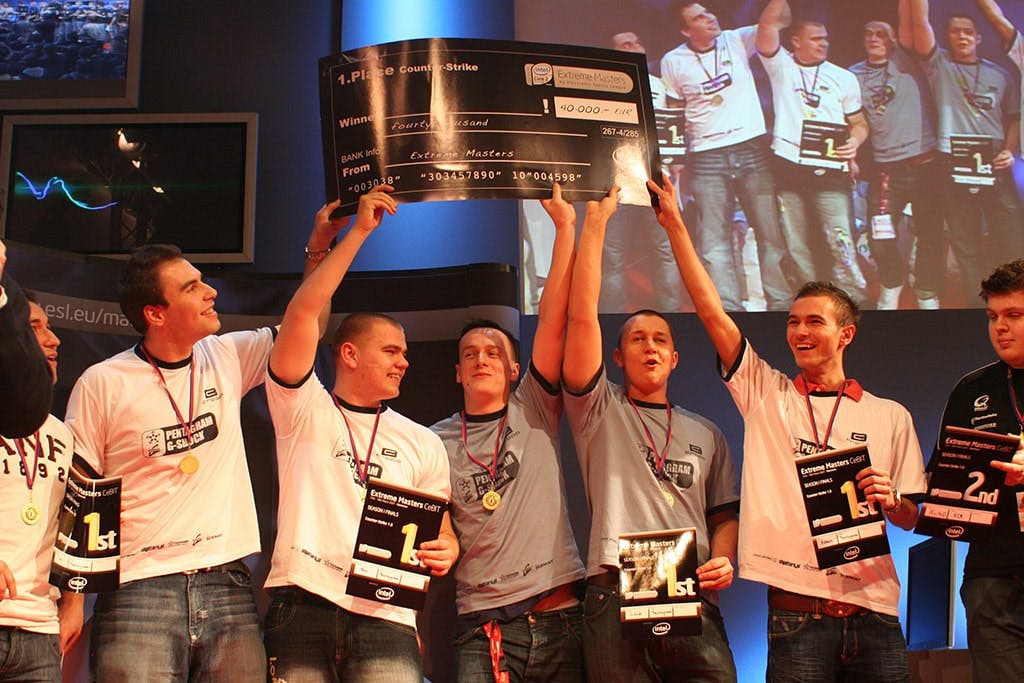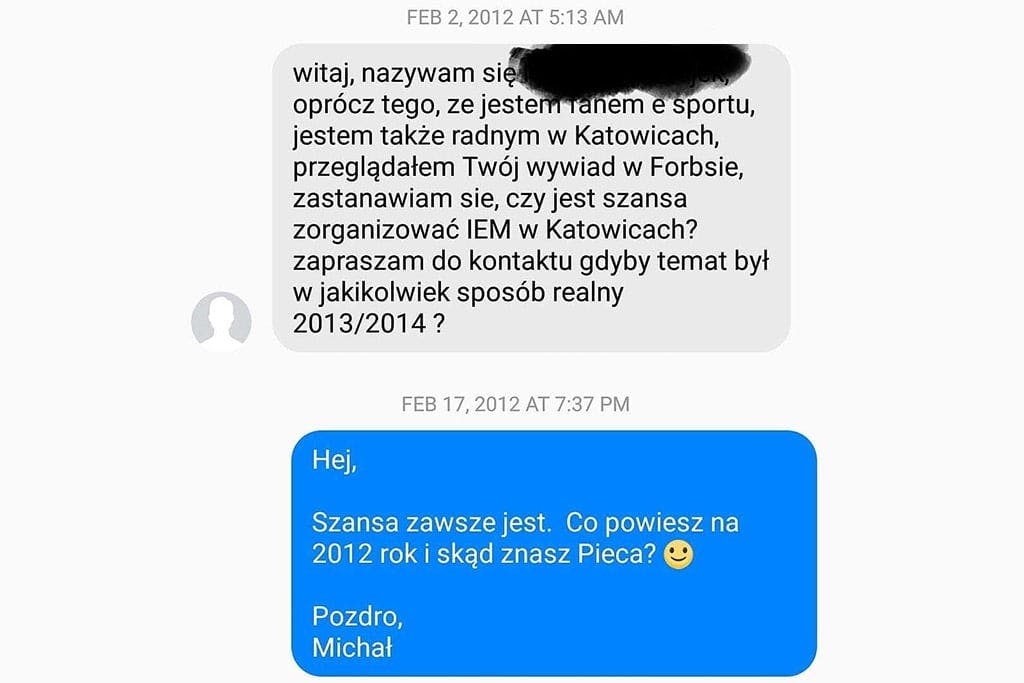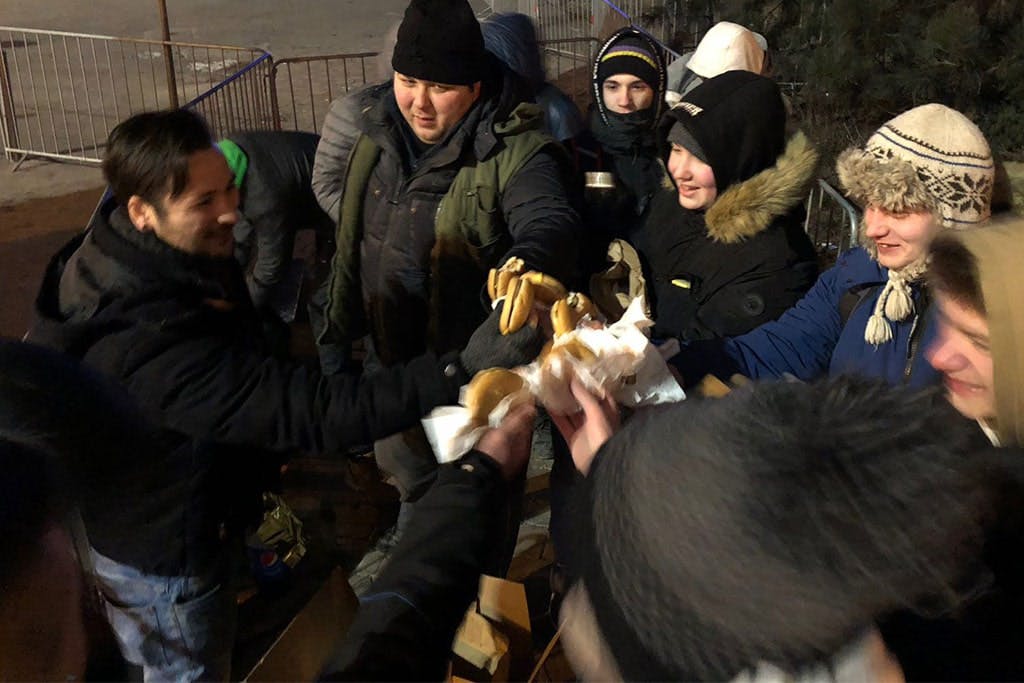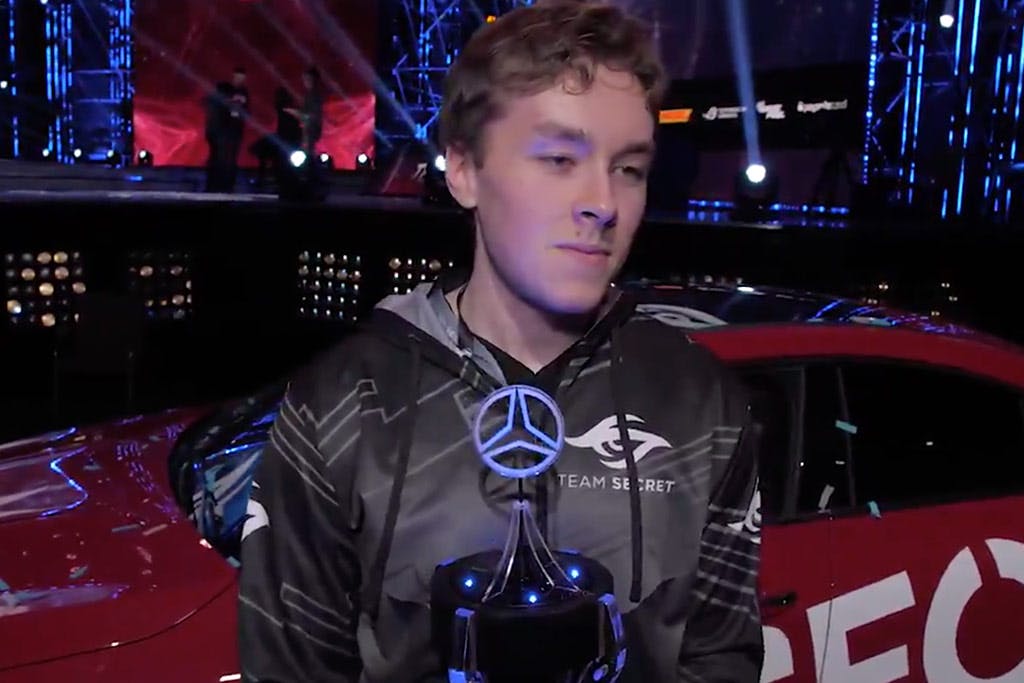In March of 2007, eight Counter-Strike 1.6 teams assembled for the first ever Intel Extreme Masters. Few among those teams would have realised the magnitude of the event they were competing in, or that Intel Extreme Masters (IEM) would become the longest running global esports tour in the world. Now in its sixteenth season, competitors in Counter-Strike’s sequel, Global Offensive (CS:GO), and StarCraft II will divide $1,500,000 between themselves in Katowice, Poland in February.
Fundamental to Intel’s sponsorship of ESL was the promise of expansion outside of Europe. The 2007 CS 1.6 event would only feature European teams, meaning 2008 was the year IEM became a truly global spectacle, featuring mibr of Brazil and e-STRO of South Korea. e-STRO would shock the European elite, reaching the final before being defeated by the mousesports of Fatih "gob b" Dayik. Intel had their worldwide event, but neither they nor ESL settled on their laurels. By Season 3, the event became a season with tournaments taking place in Montreal, Dubai, and Seoul, all leading to the World Championship in Hannover.
The global nature of IEM has only increased since – the CS:GO part of IEM XIV featured players from every single continent. The depth of talent present has been complemented by the wide variety of esports titles, with IEM showcasing Warcraft III, World of Warcraft, Quake Live, DotA, League of Legends, Hearthstone, and PUBG in addition to the aforementioned Counter-Strike and Starcraft II. IEM even brought esports to the 2018 Winter Olympics, with an exhibition StarCraft II tournament in PyeongChang.

IEM is now synonymous with the city that has hosted its season finale since 2012: Katowice. It is hard to imagine, ahead of our return to Katowice for the 9th time in February 2022, IEM without it. But were it not for two Facebook messages between a Katowice town-councillor and Michał “Carmac” Blicharz, Director of Pro Gaming for ESL at the time, IEM might not have come to Poland at all.
After reading an article in Forbes, the council-man learned that IEM had out-grown CeBit’s 10,000 square meter hall in Hannover, where space was so tight ESL were forced to turn visitors away with queues forming at the entrance. Realising that he had a solution, the councilman opened up Facebook and shot his shot: “is there a chance to organize an IEM in Katowice?” The answer, of “szansa zawsze jest - there is always a chance” would, according to Carmac, “change [his] life, and possibly esports as well”.

Figure 1: the chat that changed it all. Councilor: "apart from the fact that I am a fan of esports, I am also a councilor in Katowice, I was browsing your interview in Forbes, I wonder if there is a chance to organize an IEM in Katowice? feel free to contact me. Michal: There is always a chance. What about 2012 and how do you know Pieca?
Katowice, a small industrial city that houses just 290,553 people (about the same as Anchorage in Alaska, or Newcastle in the UK), had the perfect venue for esports to explode. The Spodek Arena - named for its saucer-like shape - would open its doors to IEM for the first time in 2013 and immediately reach its 11,000-person capacity, the highest figure for a Western esports event at the time. Before Katowice, ESL’s highest ticket sales for an event was about 1,000. By 2016, fans would sleep outside the Spodek’s ticket office to ensure a seat. By 2018, there were 175,000 different fans in the arena over the weekend, and IEM Katowice was “the largest esports themed expo in the world”.
When the Spodek opens its doors to the esports world once more in 2022, it will have been more than ten years since IEM Katowice was conceived in that conversation between Carmac and city councilman. Since then, there have been twenty-five championships, five esports, and countless unforgettable moments. Now, it is time to re-visit them. This is the Road to Katowice.
For IEM’s Katowice debut, there would be two esport titles on show: StarCraft II, a real-time strategy (RTS) game that had featured at IEM since 2010 was paired with the MOBA (Multiplayer online battle arena) League of Legends. ESL were hopeful for success, but that definition of success was about to change.
Reflecting to PC World, Carmac said that “3000 people would be a massive success” for Katowice’s esports debut. Intel’s George Woo described gaming as “under the radar” in Poland in the same interview. Yet, an hour before the games even started, the arena was full. “Two to three thousand people” were waiting patiently outside in the cold -5.5°C January air. Poland had answered IEM’s call; now it was up to the competitors on stage to put on a show to keep them there.
And it did not take long. Enrique "xPeke" Cedeño Martínez’ legendary ‘backdoor’ – where a player attacks an enemy team’s base without support - gave Katowice a magical moment in League of Legend’s first outing. In fact, magic is underselling it. Deman crowned it as “the best, best, best thing I have ever seen in the entire history of League of Legends”. xPeke - with just 18 health points - used Kassadin’s Riftwalk to perfection, teleporting into SK Gaming’s base to destroy their Nexus (and subsequently win the game) on his own. The play was so good his name became a verb; “xPeke” is now slang for backdooring a Nexus. xPeke’s Fnatic side would fall in the semi-finals, with Gambit Gaming winning the event just four days after being dropped by their org, Moscow Five.
Starcraft II also gave the Spodek something to cheer about, with two Poles (Grzegorz "MaNa" Komincz and Artur "Nerchio" Bloch) making it all the way from the Open Bracket to the Round of 12. The winner, though, would be South Korea’s Protoss player, Kang "First" Hyun Woo, who would end the tournament with a mapscore of 19-2, winning seventeen maps in a row.
The festival atmosphere would return for 2015. In StarCraft, the event served as a redemption arc for Joo "Zest" Sung-wook. The Korean had failed to qualify for GSL (Global StarCraft League) 2015 Season One, losing two series as a heavy favourite and drawing accusations of a ‘slump’. At Katowice, Zest’s victory silenced those discussions, taking home the lion’s share of the $117,707 prize pool in the process.
In CS:GO, there was less romance; the theme was one of brutality. Fnatic, the best team in the world, demonstrated their dominance and swept past both NIP and VP – the two finalists in 2014 - to win the second Valve Major at Katowice. The Major was run at the same time as an all-female CS:GO tournament, ‘IEM Challenge’. With a $30,000 prize pool, winners Bad Monkey Gaming would take home more than double their previously largest prize purse, professionalising women’s esports and starting the journey that led to #GGFORALL – ESL’s brand new Global Women’s circuit sponsored by Intel.
By 2015, IEM Katowice was one of few international League of Legends tournaments outside of Riot’s direct control, meaning there were fewer and fewer opportunities for regions to challenge the pre-eminence of South Korea, the tiny Asian peninsula that had dominated League of Legends from 2013-15. Gambit Gaming, in Katowice in 2013, were the last Western team to win an international tournament; a North American team had not won any event with Koreans present for four years.
That would all change in Katowice, with the “biggest upset” in League of Legends history. GE Tigers were undefeated at the top of Korea’s LCK; their opponents, World Elite, were 14th in the Chinese equivalent. Against all the odds, World Elite would triumph against the favourite for the title, reaching the final against TSM. The level of this upset was made even more obvious by the final: Team SoloMid, aided by an MVP performance from Søren "Bjergsen" Bjerg, would decimate World Elite 3-0. Katowice had once again hosted something special - the planting of the Stars and Stripes on a landscape cluttered with Taegukgi.
After three years of stellar action IEM Katowice had consolidated its status as one of the best weekends in esports, which was reflected in tickets selling out within fifteen minutes in 2016. There were huge lines to the entrance as those who missed out tried to secure one of the free seats in the wings.
In CS:GO, Fnatic’s era was still in full swing as they won their sixth LAN event in a row and back-to-back Katowice trophies. Yet, it would be Fnatic’s last big win with this roster. Unbeknownst to those in the Spodek, the best player in the world and MVP of both of Fnatic’s Katowice victories, Olof "olofmeister" Kajbjer, would be diagnosed with a repetitive strain injury soon after the event. That injury would herald the end of a dynasty, making Fnatic’s evisceration of Virtus.Pro, Astralis, and Luminosity the last showing of one of CS:GO’s greatest ever teams.
However, Katowice 2016 was also the event that illuminated Fnatic’s replacement. Brazil had won a Major in Counter-Strike 1.6, but was considered a sleeping giant in Global Offensive. That is, before the emergence of Luminosity Gaming. Gabriel "FalleN" Toledo would in-game lead and AWP, breaking the mould of team captains being less skilled individually. And at Katowice the true potential of this new style of team composition was shown: FalleN would blow the mind of Alex "Machine" Richardson and all 11,000 fans inside the Spodek with a 1v3 clutch featuring one of the best flicks in Counter-Strike history.
Meanwhile in League of Legends, Korea would reclaim the Katowice crown. SK Telecom T1 flew to Poland with doubts – they were 6th in the LCK – but they would leave without being defeated once. Star player Lee "Faker" Sang-hyeok would win his eighth major trophy, well on his way to securing a legacy as the greatest player of all time.

For StarCraft, IEM would have even higher stakes than normal - it would have the cooperation of game developer Blizzard, meaning the winner, as well as $35,000, would be granted a WCS Global Playoffs Seed and 3000 WCS circuit points. Choi "Polt" Seong-hun, already a three-time world champion, would take advantage and become the first Terran player to win in Katowice.
All three games would return for IEM’s 11th edition in 2017. Blizzard would continue their co-operation with ESL in StarCraft to offer 3000 WCS Global points and Seed for the finals, but a with a much-increased $100,300 for the winner. Jeon "TY" Tae-yang would leave as champion, defeating Kim "Stats" Dae-yeob to become the second Terran player in as many years to win IEM Katowice.
However, with more and more of the year’s League of Legends calendar taken up by Riot’s leagues, 2017 would be the last time that the Spodek would host an IEM World Championship. Flash Wolves of Taiwan would go on to be worthy winners - despite an incredible performance all tournament by G2 Esport’s Luka " Perkz " Perković – and with that win are still the reigning League of Legends IEM World Champions.
The Counter-Strike tournament would pit FaZe Clan’s Finn "karrigan" Andersen against his old teammates, the Danes of Astralis. It would be a rivalry that continued for most of the year, but first blood was struck by Astralis. Courtesy of a sensational Desert Eagle ace by Peter "dupreeh" Rasmussen on a ‘full eco’ – a round where FaZe had far superior weaponry – Astralis came back from 1-0 in the series and 11-9 in the map to win 3-1, securing their first Katowice win.

In CS:GO, Karrigan’s FaZe would once again falter in the final, losing to the Swedes of Fnatic in an epic best of five that needed all five maps. It would be the third Katowice trophy for Robin 'flusha' Rönnquist, Freddy 'KRIMZ' Johansson, and Jesper 'JW' Wecksell, the Swedes running it back to the glory years of 2015 and 2016. It was more straightforward in the StarCraft II final, with Lee "Rogue" Yeol winning 4-0 in a best of seven final.
Despite League of Legends’ absence, the now-familiar triad of CS:GO, RTS, and MOBA remained thanks to an all-new game for 2018: Dota 2. 2018 would be the first Dota Major in Poland and have a massive prize pool of $1,000,000. Virtus.Pro would triumph, matching the organisation’s successful CS:GO debut in 2014, albeit with a Russo-Ukranian roster and not a Polish one.

In CS:GO, the winners would also lose just one map en-route to the championship. The event was ESL’s first Valve-sponsored Major since 2016, and Katowice’s first since 2015. The winners, Astralis, were in the midst of an all-conquering era, achieving a level of dominance no CS:GO team could compare to.
The memorable run, though, would not come from the winners but the runners-up. Going into the event, ENCE were 17th in the world rankings but they would put together a magnificent run to the final. Their quarter-final victory over the second-best team in the world, Team Liquid, would be matched by them beating the best player in the world, Oleksandr "s1mple" Kostyliev, in the semi-finals. Astralis would prove too much for them in the final, but that cannot be held against them - Astralis were too much for everyone at this time.
Dominance may have been the theme in Dota 2 and CS:GO, but not in StarCraft 2. Eo "soO" Yun-su had to come back from losing his first three matches in the group stage; but come back he did, winning $150,400 and expunging the demons of his nine 2nd place finishes in Premier events. soO was Sisyphus no longer.
12 months later, the pandemic would prevent IEM Katowice coming to Katowice at all. But the online environment would see the rise of a new generation of esports competitors: Team Spirit defeated the greatest CS:GO team of all time, Astralis, 16-1 on Dust 2. Yet, as one star fell another would rise: Gambit Esports would run out winners, even toppling s1mple’s NaVi in the quarter finals.
In October of 2020, just four months prior, Gambit had promoted four of its ‘Youngsters’ division, leaving Abay "Hobbit" Khasenov as the sole member of the squad with tier one experience. The bold show in youth would not take long to pay off: Katowice would be their first event win ahead of a charge to becoming the best team in the world in summer 2021 – Gambit’s youngsters had graduated with flying colours.
StarCraft, too, would get a winner few could have predicted: Italian Riccardo "Reynor" Romiti. He was the first competitor outside of Korea to win IEM Katowice and had to do so the hard way, beating four Koreans in four tightly fought playoff series.